Introduction
When you are sourcing or designing your own socks, ever had customers ask why their compression socks sag or their grip socks slip? It all comes down to sock structure. Do you have an understanding of the basic construction of socks? Different constructions can enhance the functionality and comfort of your socks and better fit your brand concept. As a socks manufacturer with 20 years of experience, I, the project manager will introduce 5 basic sock constructions to help you get a better idea.
The 5 basic structures of a sock is a jacquard pattern which can be called as a sock design, the second is one is elastic rib which is normally used on sports socks. A cuff is the top part of socks, there’re many different styles. Mesh structure is also common on sports socks, and the last is terry and flat structure.
Jacquard Pattern
The jacquard section is a common construction on socks, and most of the patterns on socks are knitted, which means it’s knitted by the machine directly. Below are photos for reference. So when you send an inquiry to the factory, pay attention to the pattern technique. If you write a printing pattern, then this is a completely different technique from jacquard (refer to this previous article for the printing process), and the price of printing is more expensive than jacquard. So be careful to distinguish between the pattern process.

Elastic ribs
In our compression sock ribs, elastic ribs are used to improve the elasticity of the socks, as they are the main component of our factory compression socks. They are basically used in sports socks, mainly on the cuff, ankle and arch support areas. According to the American Orthopaedic Foot & Ankle Society, proper support and stability in sock construction—such as elastic ribs—can reduce foot fatigue and injury risk during physical activities. By adding elastic ribs, the stretch is enhanced, helping the wearer to bounce better during exercise. In addition, the stronger stretching makes them feel more compression during exercise and improves blood circulation. The thickness of the rib varies as well, as shown in the picture below. 2*1 and 3*1 are common, with the latter being more common.
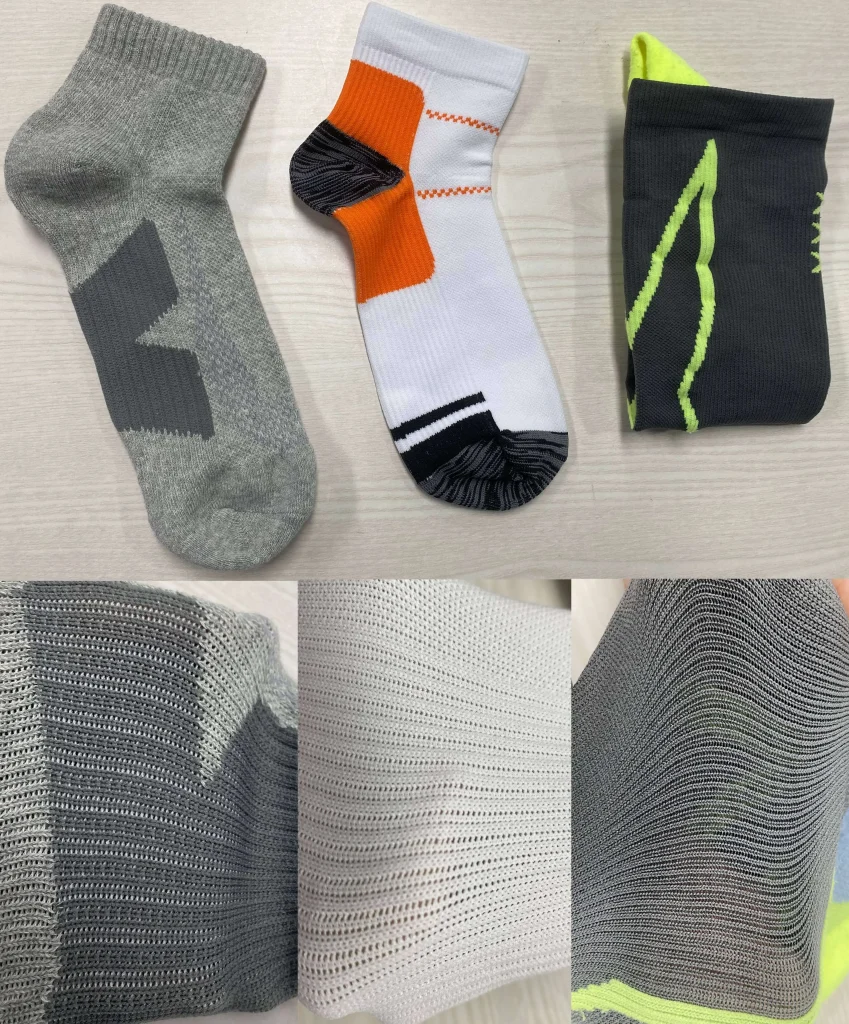
Cuff structure
The cuff part is known as top of socks, and the different cuff structures will affect the comfort of the sock. The below pictures show a few different types of cuff construction. For everyday casual socks, the cuff is relatively loose to achieve a comfortable fit, but loose doesn’t mean that they will fall off over time, but rather that they are less tight compared to sports socks. The right picture shows the cuff of a sports sock, which is made of elastic ribs in 3*1 or 2*1 thickness. A moderately tight cuff prevents the sock from falling off during exercise and provides support for the ankle. There is a special type of sock called a diabetic sock, which is usually made with a loose-cuff construction, as diabetics are affected by high blood sugar levels over a long period of time, which can cause poor circulation and require a loose-cuff design to prevent the foot from being squeezed.
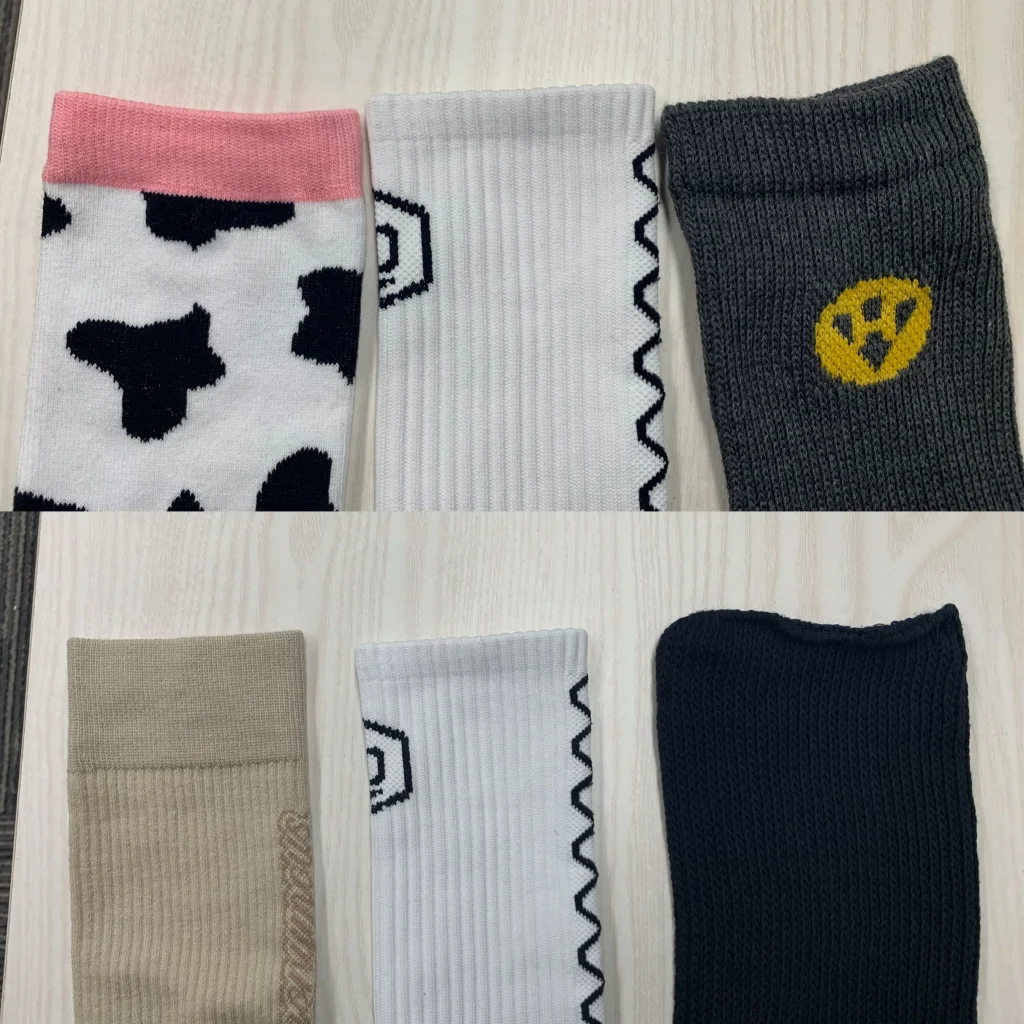
Flat and Terry
In terms of thickness, socks are differentiated by flat and terry, as shown in the chart below. The majority of daily regular socks are mainly flat, while sports socks or socks with a thermal function have an additional terry section. Terry loops can be made on the soles of the feet or the whole sock body, in addition to increasing warmth, there is also the function of moisture absorption and perspiration, so sports socks generally add terry loops on the soles of the feet.
Moreover, the terry can also make a variety of shapes in different parts, such as the dots in the image below, the protective layer on the ankles, and irregular stripes on the soles of the feet.
This irregularly shaped loop is called arbitrary terry, and its production is much lower than that of ordinary socks and is, therefore, more expensive.
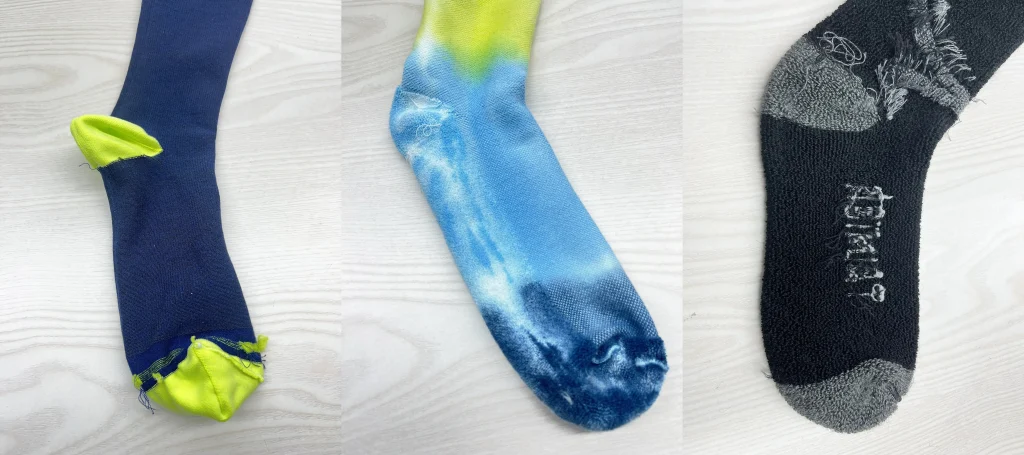
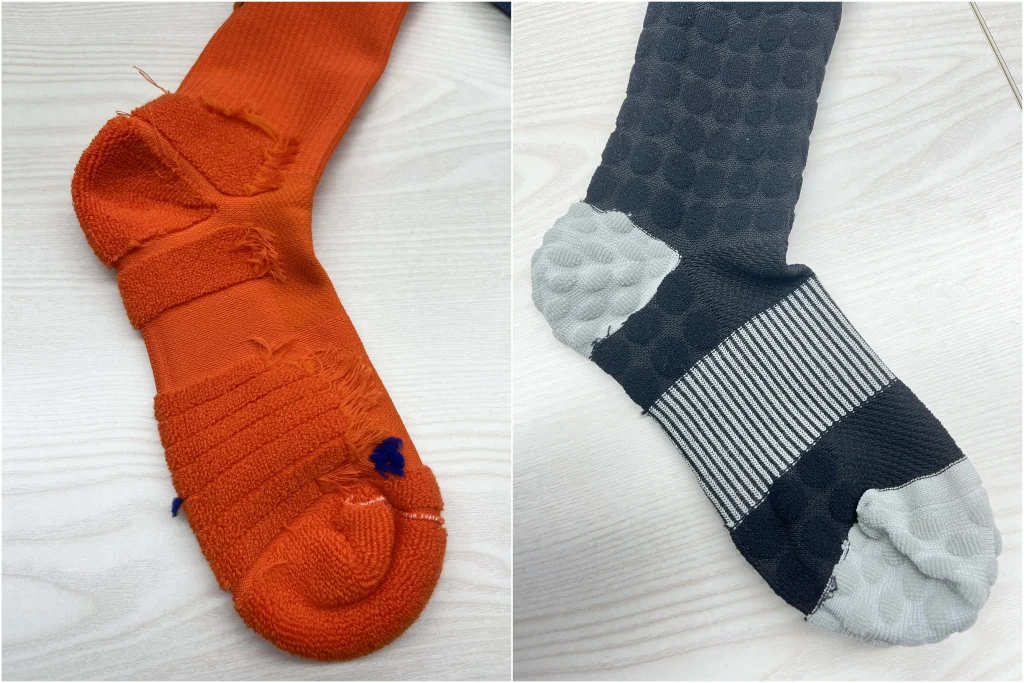
Mesh structure
The mesh construction is easy to recognize, as shown in the following picture. Usually, the mesh is used on sports socks to achieve the effect of ventilation, but there are also patterns made from the mesh. In addition, the mesh can be made anywhere on the sock, usually at the instep and ankle.
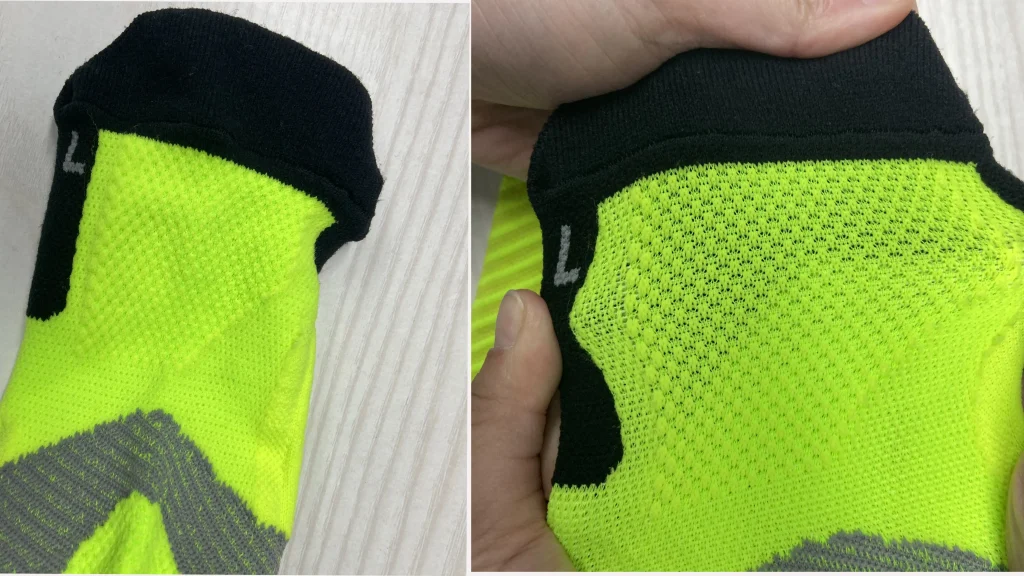
So the above is about the 5 basic structures of socks, which we hope will help you with sock design.
Here’s a summary video for your reference:
Conclusion
Understanding the five basic sock structures—jacquard pattern, elastic rib, cuff design, mesh ventilation, and terry construction—can help you make more informed choices when sourcing or developing socks for your brand. Whether you’re focused on performance, comfort, or medical use, these elements play a direct role in user experience and product value. Our production uses only certified yarns—every thread in your socks can be traced and meets high textile safety standards under OEKO‑TEX® Standard 100, ensuring they’re harmless to human skin and environmentally friendly.
If you encounter design problems or are unsure what structure can better help you match your brand positioning, welcome to contact us at Jiaxing Max Hosiery–we’re your problem solver in the socks industry.
FAQs
1. What are the main structural parts of every sock?
Every sock is built with a few key parts: the cuff (the top band that holds it up), the leg, the heel (shaped for a snug fit), the foot or sole, and the toe. Each part is engineered to work together for maximum comfort, fit, and durability.
2. What is the cuff and why is its structure important?
The cuff, also called the welt, is the elasticated band at the very top of the sock. Its primary job is to hold the sock up on your leg without slipping down or digging into your skin. A well-designed cuff provides gentle compression for a secure yet comfortable all-day fit.
3. Why do the heel and toe often have a different structure?
The heel and toe are high-impact areas. The heel is often built with a deeper “pocket” to cup your foot and prevent the sock from rotating. Both sections are frequently reinforced with a denser knit or extra cushioning to increase durability and protect your feet from friction and blisters.
4. How does the basic structure change for different sock lengths?
The primary structural difference between sock types is the length of the “leg” section. A no-show sock has almost no leg structure, while an ankle sock’s leg stops at the ankle bone. Crew, calf, and knee-high socks simply feature progressively longer leg structures for greater coverage and support.
5. What are “grippers” and how are they added to a sock’s structure?
Grippers are functional additions, typically dots or patterns of silicone, applied to the sole of the sock. They are not part of the woven fabric but are bonded to the exterior structure. This feature provides traction and prevents slipping on smooth surfaces, adding a safety element to the sock’s design.
Follow us:
